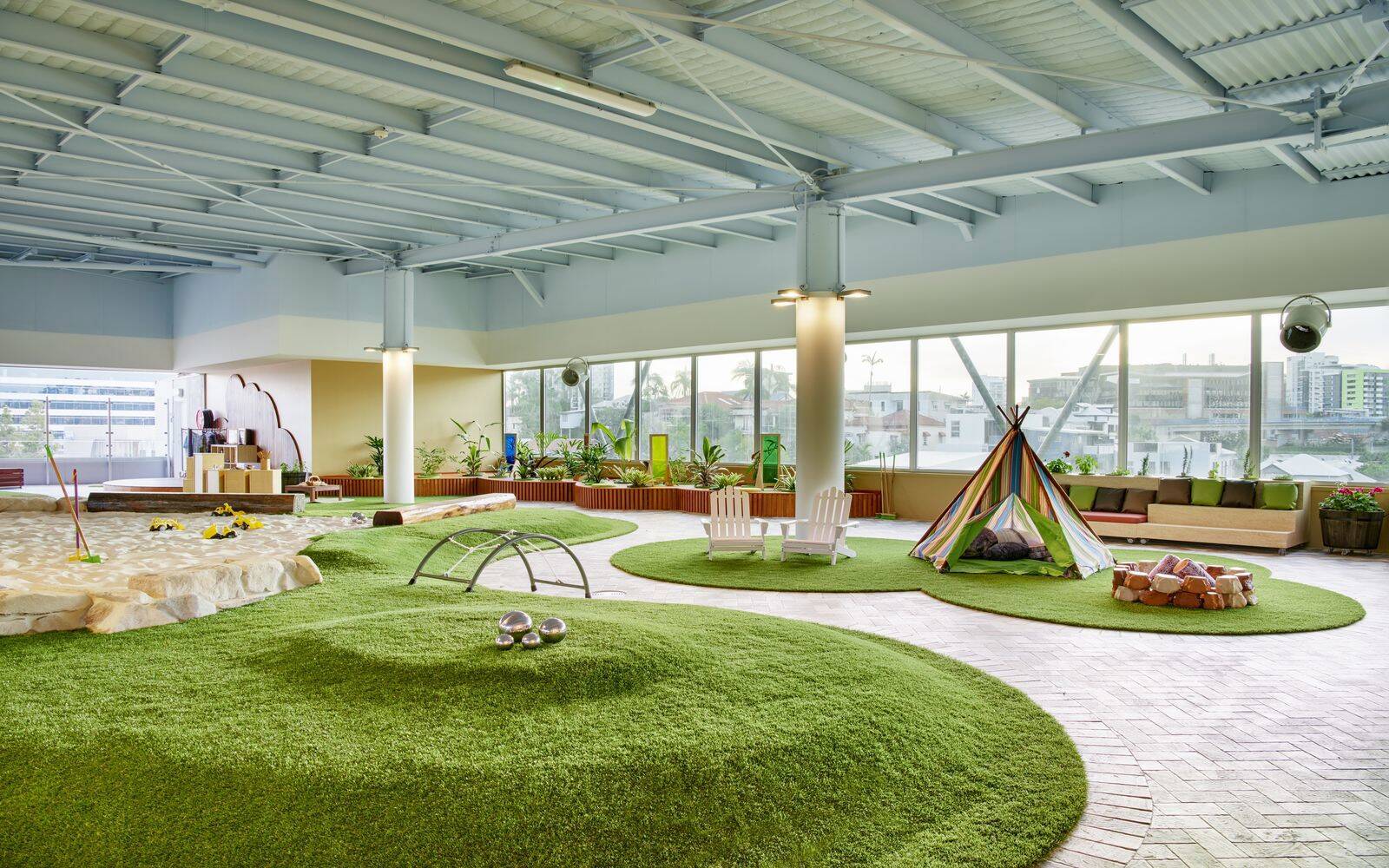Guardian Childcare & Education is Australia’s fourth-largest childcare centre business, with over 160 centres nationwide. The company plays a pivotal role in the developmental journey of more than 20,000 children each year. Over the past 3 years, Guardian has grown its number of childcare centres by 50 per cent. It now faces a significant challenge – how to support its burgeoning workforce of 6,000 educators and staff efficiently. The goal was clear – to enhance how educators access critical information, empowering them to spend more time nurturing the young minds in their care.
Guardian’s educators relied on an internal SharePoint Intranet repository, Guardian Way, for guidance on various protocols, ranging from classroom injuries and illnesses to other unforeseen incidents. However, searching through this extensive digital library was time-consuming and often cumbersome, making it difficult for educators to find the information they needed quickly. Recognising the need for a more streamlined and accessible approach, Guardian set out to transform its knowledge management system.
The company decided to explore generative AI and leverage Azure OpenAI’s cutting-edge technology to reimagine how educators retrieve and process information.
The initiative led to the creation of ‘Ask Guardian Way’, an internal chatbot designed to provide instant access to the company’s vast repository of information. This innovative tool enables educators to receive immediate, accurate answers to policy-related questions, dramatically enhancing efficiency and confidence in the classroom.
Building Ask Guardian Way
Ask Guardian Way is the definitive guide to the Guardian way of operations, aligning seamlessly with the company’s policies and procedures. Its design reflects a commitment not just to technological advancement but also to fostering a culture of accessibility and efficiency among staff.
Accessible directly from the staff intranet homepage, Ask Guardian Way requires a secure login from a staff device, ensuring that sensitive information remains protected. Staff members can query the chatbot on various topics, from locating documents for new staff check-ins to logging classroom incidents. The generated response also includes direct links to the source documents it references. This not only adds a layer of credibility by verifying the information but also allows staff to delve deeper into the documentation if needed.
The technical groundwork involved indexing 1,200 documents as PDFs. Using Azure OpenAI, this task was accomplished in a mere 90 minutes. This rapid processing underscored the efficiency of the tool and its capability to organise extensive documentation swiftly.
“Once we had the product from Microsoft, all it took was a bit of rebranding and instructing it to scan our repository. The pilot was operational within hours”, said Keith Hopkins, IT Services & Communications Manager at Guardian Childcare & Education.
A crucial aspect of Ask Guardian Way is its dynamic content refresh system. The chatbot’s database is automatically updated every night, ensuring that any changes to policies or intranet pages are promptly reflected. This means the chatbot always dispenses the most current information, providing timely and accurate support to educators.
Getting access to AI
Guardian’s AI journey began with its foundation in Microsoft’s Azure cloud environment, a strategic move made over five years ago. Once the company decided to explore generative AI to alleviate this pain point, Hopkins approached Microsoft for support and was given access to Microsoft’s Public Sector Information Assistant, a tool tailored to enable customisations of Azure OpenAI’s sophisticated language models.
This industry accelerator enables the seamless integration of Azure AI Search with the nuanced capabilities of large language models, streamlining data retrieval through ChatGPT-style Q&A sessions. Embracing the Retrieval Augmented Generation (RAG) design pattern, the tool offers a natural language interface that could sift through Guardian’s extensive repository to fetch pertinent answers to educator queries.
With the help of Lead Architect Ashvith Bangera, the company built a custom AI model in Azure OpenAI with secure and compliant access to SharePoint. This is a particularly groundbreaking innovation in the childcare sector as it brings high-level computing capabilities into the hands of educators.
“The IT literacy of childcare educators is typically low. These are people trained to look after children, so the more time they can spend doing what they’re good at and the less time they have to spend in front of a screen to help them do that, the better,” says Hopkins.
Supporting educators first
This real-time support for educators is a transformative tool that facilitates prompt and informed decision-making in childcare. Take, for instance, the scenario of a child falling ill. Previously, educators had to navigate the comprehensive Child Sickness Policy, deciphering intricate guidelines to determine the necessary steps. Now, an educator can simply enquire, “At which temperature should I send a 2-year-old child home?” and receive an instantaneous response with the exact information required. The chatbot further assists by outlining subsequent actions, such as notifying parents and managing the child’s daily checkout, all sourced directly from the policy.
“This chatbot allows the educator to spend more time with the children rather than combing through 300-page documents to figure out the right thing to do. It’s enhancing the quality of interaction between educators and children by minimising administrative hurdles,” says Wenshuo Han, Strategic Customer Success Architect at Microsoft Australia and New Zealand.
The chatbot now fields hundreds of daily queries, a testament to its effectiveness and the trust educators place in it. For new staff, the chatbot serves as a digital mentor, streamlining the onboarding process and helping them confidently navigate training milestones, fortified by an easily accessible trove of organisational knowledge.
Looking ahead, the company is looking at ways to integrate the chatbot with the organisation’s ticketing system to further refine the support system. This integration would empower educators with AI-generated recommendations and answers, reducing wait times for human support responses. Beyond that, Guardian envisions extending the chatbot’s services to prospective parents, allowing them to enquire about enrolments, book tours and receive quotations easily.


